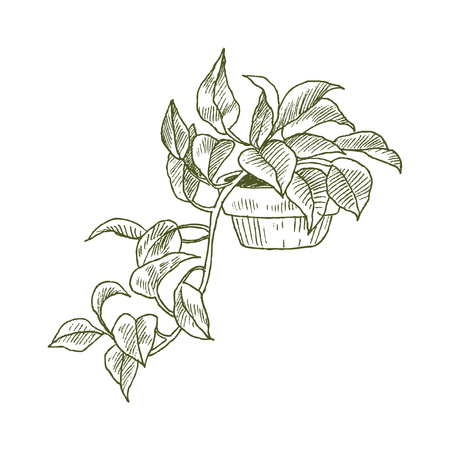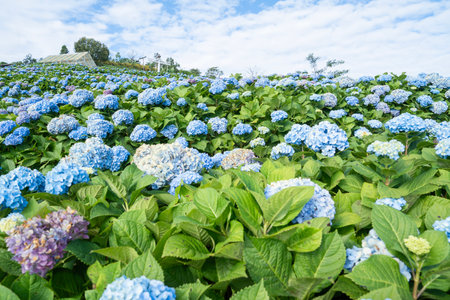Understanding the UK Climate and Soil
If you’ve ever chatted with a keen British gardener over a cuppa, you’ll know that our weather is as much a topic of conversation as our gardens themselves. When it comes to selecting plants for year-round colour in the UK, understanding our unique climate and soil is absolutely vital. The British Isles are famed for their unpredictably mild, wet weather—think misty mornings, sudden downpours, and the odd heatwave thrown in for good measure. Yet, there’s more to it than just “rain and more rain,” as my old neighbour used to say.
Typical Weather Patterns Across the UK
The prevailing westerly winds bring moist air from the Atlantic, meaning western regions like Cornwall and Cumbria tend to be milder and wetter. In contrast, eastern counties such as Norfolk or Lincolnshire often enjoy drier spells but can experience sharper frosts in winter. Down south, gardens bask in slightly warmer temperatures, ideal for tender perennials, while up north and in Scotland, hardier varieties fare best due to cooler conditions and shorter growing seasons.
Regional Differences That Matter
It’s not just the rain or sun that makes a difference—it’s how these factors play out over the months. For example, gardens in Devon might thrive on heavy clay soils that hold moisture well but can become waterlogged, whereas sandy soils in parts of East Anglia drain swiftly yet may require regular watering during dry spells. Upland areas are more exposed to wind and can suffer from late frosts well into spring—a real consideration when selecting your earliest bloomers.
Soil Varieties: The Foundation of Your Garden
A seasoned gardener will always tell you: “Know your soil before you plant.” Across Britain, soil types range from acidic peats in the Scottish Highlands to alkaline chalk down south. Heavier clays suit moisture-loving perennials like astilbe or hosta, while free-draining sandy soils favour Mediterranean shrubs and annuals such as lavender or cosmos. It pays to test your soil’s pH and texture before choosing your palette of plants—after all, even the most vibrant perennial won’t shine if its roots aren’t happy.
Experience Teaches Us
Over the years, I’ve learned to work with what nature gives me—amending beds with compost where needed and choosing resilient varieties that match both my local climate and soil. This thoughtful approach ensures a garden that not only survives but flourishes with colour through every season—a little patience and observation go a long way in our changeable British weather.
Choosing Perennials for Lasting Colour
When it comes to achieving a garden that bursts with colour throughout the year in the UK, perennials are truly the backbone. These reliable plants come back year after year, often requiring less maintenance than annuals and providing steady interest as the seasons change. For British gardens, where weather can be notoriously unpredictable, selecting hardy and fuss-free perennials is essential. You want varieties that will withstand a bit of frost, cope with wet spells, and still put on a dependable display without too much pampering.
One of the keys to success lies in choosing perennials that flower at different times. This ensures there’s always something taking centre stage, whether it’s the cheerful snowdrops and hellebores in late winter or vibrant asters and sedums lighting up autumn. It’s a good idea to mix heights and textures as well, so your beds don’t look flat or sparse during any part of the year.
Recommended Hardy Perennials for British Gardens
| Perennial | Main Flowering Season | Notable Features | Colour Range |
|---|---|---|---|
| Aquilegia (Columbine) | Late Spring–Early Summer | Tolerates shade; self-seeds readily | Purple, blue, pink, white |
| Geranium (Cranesbill) | Late Spring–Autumn | Long flowering period; low maintenance | Purple, pink, blue, white |
| Echinacea (Coneflower) | Midsummer–Early Autumn | Drought tolerant; attracts pollinators | Purple, white, yellow |
| Helleborus (Hellebore) | Winter–Early Spring | Tolerates shade; early bloomer | Cream, pink, green, purple |
| Aster (Michaelmas Daisy) | Late Summer–Autumn | Loved by bees; autumn interest | Purple, blue, pink, white |
| Sedum (Stonecrop) | Late Summer–Autumn | Drought resistant; architectural foliage | Pink, red, white |
| Alchemilla mollis (Ladys Mantle) | Early–Mid Summer | Tolerates poor soils; soft foliage texture | Lime green/yellow flowers; soft green leaves |
| Phlox paniculata (Border Phlox) | Midsummer–Early Autumn | Scented blooms; good for cutting gardens | Pink, purple, white, red |
A Few Practical Tips from Experience:
- Group in Threes or Fives: Planting in odd numbers tends to look more natural and pleasing to the eye.
- Go Native When Possible: Many British native perennials are perfectly adapted to local conditions and support wildlife.
- Add Mulch in Autumn: A layer of mulch helps protect roots over winter and keeps weeds down come spring.
- Divide Every Few Years: Most herbaceous perennials benefit from being divided every three to five years—this keeps them vigorous and gives you extra plants for free!
The Bottom Line:
If you choose wisely and give a little attention at the right times of year—a tidy-up here, a feed there—your perennial borders will reward you with colourful displays for many seasons to come. It’s a gentle rhythm that fits well with both busy family life and quieter days in retirement alike.

3. Incorporating Shrubs for Structure and Seasonal Interest
When it comes to achieving a garden that looks lively and inviting throughout the year, shrubs play a crucial role, especially here in the UK where our climate can be both a blessing and a challenge. The right selection of shrubs gives your borders backbone and height, serving as the bones of your planting scheme. Not only do they provide architectural structure, but many also offer bursts of colour from their foliage, flowers, or even berries long after other plants have faded.
Choosing Shrubs for Year-Round Appeal
A well-chosen shrub can be a real stalwart in the garden. For evergreen structure, Buxus sempervirens (box) and Taxus baccata (yew) are classic choices, perfect for topiary or low hedging, keeping your garden looking tidy even in winter. If you fancy something with a bit more drama, Pittosporum tenuifolium boasts glossy leaves in various shades and copes well with our often unpredictable weather.
Shrubs for Foliage Colour
If it’s vibrant foliage you’re after, look no further than Cornus alba ‘Sibirica’, with its fiery red stems brightening up dull winter days, or Photinia x fraseri ‘Red Robin’, whose young leaves emerge a brilliant red before maturing to green. These varieties not only catch the eye but also require little fuss—ideal if you prefer a low-maintenance approach like many seasoned gardeners.
Shrubs Offering Flowers and Berries
No garden would be complete without the seasonal joy of flowering shrubs. Camellia japonica brings glossy evergreen leaves and elegant blooms in late winter or early spring—just when we need cheering up most. Come summer, Hydrangea macrophylla dazzles with large mophead flowers in shades of pink, blue, or white depending on your soil. And don’t overlook Viburnum tinus, which carries clusters of fragrant white flowers followed by deep blue berries, providing both nectar for pollinators and food for birds well into autumn.
Tips from Experience: Layering Shrubs for Maximum Effect
From my years tending British borders, I’ve found that combining tall structural evergreens with mid-height flowering varieties creates year-round interest without feeling cluttered. Place bolder specimens at the back or as focal points, then layer in lower-growing shrubs at the front. This not only adds depth but ensures there’s always something to admire—be it glossy leaves in January or berried branches come November.
Selecting shrubs suited to our UK climate—those that shrug off frost and don’t mind wet feet—will guarantee your garden remains colourful and full of life whatever the season throws at us.
4. Annuals for Quick and Flexible Colour
If there’s one thing every British gardener knows, it’s the value of annuals for injecting instant, adaptable colour into borders and containers. Unlike perennials or shrubs, annuals grow, flower, and set seed within a single season, making them perfect for filling gaps and refreshing displays as your garden evolves through the year. Both time-honoured favourites and newer varieties have their place in the UK garden – let’s take a closer look at what works best.
Traditional British Annuals
Some old faithfuls have stood the test of time in British gardens. They’re easy to grow from seed or plug plants, and they never fail to deliver a cheerful show.
| Plant | Flowering Period | Colour Range | Notes |
|---|---|---|---|
| Sweet Peas (Lathyrus odoratus) | Late spring – early autumn | Pinks, purples, whites, reds | Scented; ideal for cut flowers |
| Cosmos (Cosmos bipinnatus) | Mid-summer – autumn | Pinks, whites, magenta | Lacy foliage; long-flowering |
| Nasturtiums (Tropaeolum majus) | Summer – early autumn | Yellows, oranges, reds | Edible flowers; great for poor soils |
| Marigolds (Calendula officinalis & Tagetes) | Spring – autumn | Yellows, oranges, golds | Tough and reliable; pest deterrent |
| Petunias (Petunia x hybrida) | Late spring – autumn | Pinks, purples, whites, blues | Ideal for baskets & containers |
Newer Favourites and Unusual Picks
The gardening world never stands still, and recent years have seen a host of new annual introductions perfectly suited to UK conditions. These can bring unique shapes or colours into your scheme.
- Nicotiana ‘Lime Green’: This tobacco plant offers zingy green blooms that add modern freshness to mixed borders.
- Zinnia elegans: Heat-loving but surprisingly robust in a good summer; choose new cultivars with bold double blooms.
- Tithonia rotundifolia (‘Mexican Sunflower’): Tall stems topped with vivid orange daisies provide late-season drama.
- Ammobium alatum (‘Winged Everlasting’): Silvery foliage with papery white flowers that are excellent for drying.
- Celosia ‘Flamingo Feather’: Striking plumes in pink or red give vertical interest and last well as cut flowers.
Tried-and-Tested Tips from Experience
I’ve learned over the years that sowing annuals in succession – a few seeds every couple of weeks from early spring onwards – ensures continuous colour right through to the first frosts. Don’t be afraid to pull out tired bedding mid-summer and slot in fresh plugs for a second flush. And remember: even a humble packet of seeds can transform those awkward empty patches by the patio or path into something special.
5. Practical Tips: Planting, Maintenance, and Rotation
If you want your garden to burst with colour all year round, a little thoughtful planning and regular attention will go a long way. As many seasoned UK gardeners would say, “Right plant, right place – and the rest is just good manners.” Here’s some time-tested advice to keep your borders lively, whatever the season.
Planting Times: Getting Off on the Right Foot
In the UK, timing is everything. Perennials are best planted in autumn or spring when the soil is moist but not waterlogged. This gives roots time to establish before harsh weather sets in. Annuals, on the other hand, should be sown after the last frost—usually late May in most regions. Shrubs can be planted almost any time except during hard frosts or droughts; however, autumn remains a favourite as it allows roots to settle while growth above ground slows.
Routine Care: A Little Goes a Long Way
Once established, don’t forget your regular maintenance. Deadheading spent blooms on annuals and perennials keeps them flowering for longer—think of it as giving them a gentle nudge to keep going. Mulching in spring with well-rotted manure or compost helps retain moisture and suppress weeds, especially around shrubs and perennials. Remember to water deeply during dry spells rather than giving frequent light sprinkles; deep watering encourages roots to reach downwards and toughen up.
Rotation for Continual Vibrancy
Even the most beloved displays can lose their charm if left unchanged year after year. Rotate your bedding annuals each season to prevent soil-borne pests and diseases from building up—a trick as old as time among British allotmenteers. Shift containers around for new perspectives and swap out tired performers for fresh faces at key points in the year: winter-flowering pansies can give way to summer’s pelargoniums, while spring bulbs make room for cheerful cosmos or rudbeckia come June.
Above all, keep an eye on how each plant is faring. If something isn’t thriving where you’ve put it, don’t be afraid to move it—gardening wisdom says there’s no shame in giving a plant a second chance elsewhere. With patience and these practical habits, your garden will reward you with colour that never quits, from January’s hellebores right through to December’s fiery dogwoods.
6. British Garden Favourites and Failsafes
If there’s one thing we Brits know, it’s how to coax colour from our gardens whatever the weather throws at us. Over generations, certain plants have earned their place as steadfast favourites—reliable for their resilience, charm, and ability to bring joy through all seasons. Let’s have a natter about these classics, perfect for anyone wanting a garden that doesn’t lose its sparkle when the skies turn grey.
Perennials: The Old Faithfuls
For lasting impact, perennials like Lupins, Delphiniums, and good old Geranium Rozanne are hard to beat. These stalwarts will come back year after year with minimal fuss—just give them a decent spot, a bit of deadheading, and they’ll reward you handsomely. In my mother’s day, every cottage border seemed to boast a clutch of Peonies too—their blousy blooms are still a sight to behold each June.
Shrubs: Reliable Backbone and Colour
No British garden is complete without the backbone provided by shrubs. Hydrangeas, especially the mophead varieties, offer clouds of colour from summer well into autumn. For winter cheer, you can’t go wrong with Mahonia or Winter-flowering Viburnum. And let’s not forget the timeless Camelia, beloved for its early spring blooms when little else dares show face.
Annuals: Seasonal Splendour
If you fancy changing things up each year or filling gaps with quick-growing colour, annuals like Sweet Peas, Pansies, and classic Nasturtiums are grand choices. My gran always sowed a handful of Cosmos, which bobbed about in the breeze and kept on flowering until the first frost. They’re ideal for brightening up pots or borders when you want an instant lift.
A Few Honourable Mentions (and Warnings)
No list would be complete without mentioning trusty bulbs like Daffodils and Crocuses, sure harbingers of spring. On the other hand, while some may swear by tender exotics, I’ve found that sticking to time-tested natives or long-acclimatised varieties saves heartache in our unpredictable climate. Beware of anything too delicate unless you’ve a sheltered spot or enjoy a challenge!
The Wisdom of Experience
The beauty of these favourites lies not just in their flowers but in the memories they evoke—plants passed down from generation to generation, each one with a story. If you’re new to gardening or simply want reliable colour throughout the year, trust in these British classics. As my father always said, “Plant what your neighbours grow best—you’ll never go far wrong.” Here’s to colourful borders and cheerful plots, whatever the weather brings.


